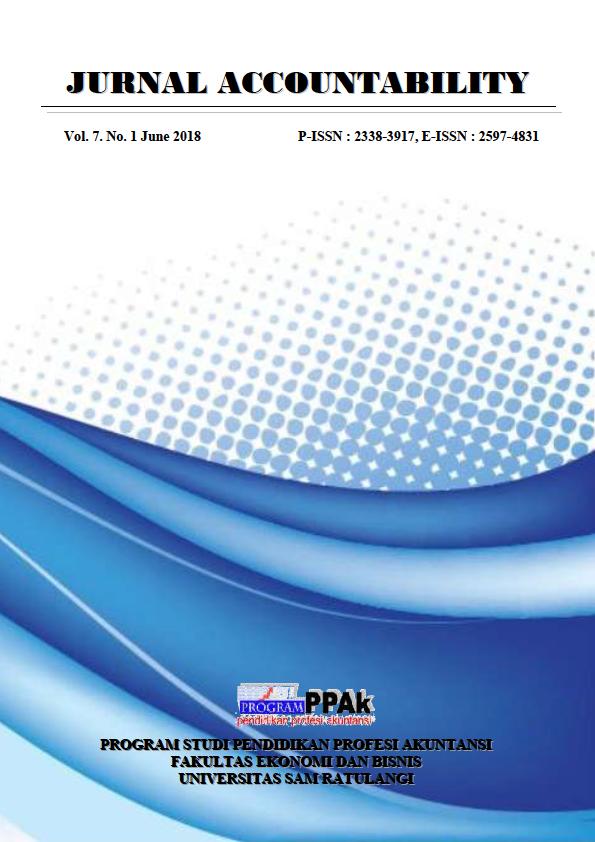ANALYSIS OF RECORDING, CALCULATION AND REPORTING OF VALUE ADDED TAX (VAT) BASED ON E-FAKTUR AT PT. BERKAT REHOBOT MANADO
Abstract
Value Added Tax (VAT) is a tax imposed at the time the company makes a purchase on Taxable Goods (BKP) / Taxable Services (JKP) charged from the Tax Imposition Basis (DPP). Every purchase of goods to be produced / sold, then the tax imposed on the goods, by Taxable Enterpreneurs (PKP) is a Tax Enter 10% of the sale price before tax as Value Added Tax (VAT) which is the output tax for the tax period concerned. The type of data used in this study is, Qualitative Data is data obtained from data collection techniques through interviews, analysis of focused discussion documents or observations recorded in the report. This research was conducted at PT. Berkat Rehobot. Research conducted on the recording, calculation and reporting of Value Added Tax (VAT) at PT. Berkat Rehobot it can be concluded that this company has done accounting of Value Added Tax (VAT) in accordance with Law Number 42 Year 2009. As for the calculation and reporting using e-Faktur application so that the lack of errors that occur. If there is a lack of delays or correction in reporting due to delays in the delivery of existing Input Tax Invoice. However, the overall calculation and reporting has been in accordance with the Director General of Tax Regulation No. PER-16 / PJ / 2014.
Keywords: VAT Recording, Counting and Reporting
Downloads
Published
Issue
Section
License
The articles published in Jurnal Accountability are licensed under Creative Commons Attribution-NonCommercial 4.0 International with authors as copyright holders.
Â

This work is licensed under a Creative Commons Attribution-NonCommercial 4.0 International License.
Â
- Share — copy and redistribute the material in any medium or format.
- Adapt — remix, transform, and build upon the material.
- The licensor cannot revoke these freedoms as long as you follow the license terms.
- Attribution — You must give appropriate credit, provide a link to the license, and indicate if changes were made. You may do so in any reasonable manner, but not in any way that suggests the licensor endorses you or your use.
- NonCommercial — You may not use the material for commercial purposes.
- No additional restrictions — You may not apply legal terms or technological measures that legally restrict others from doing anything the license permits.
- You do not have to comply with the license for elements of the material in the public domain or where your use is permitted by an applicable exception or limitation.
- No warranties are given. The license may not give you all of the permissions necessary for your intended use. For example, other rights such as publicity, privacy, or moral rights may limit how you use the material.


